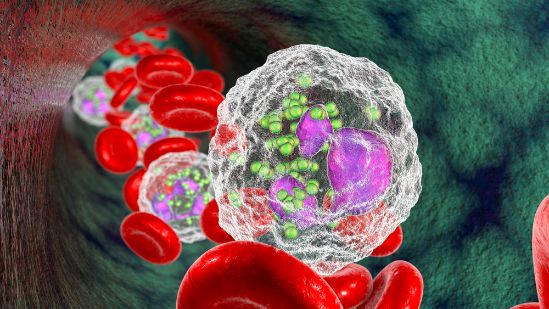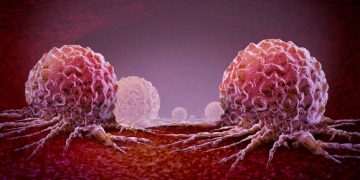A sarcoma is cancer that develops from cells that normally form bone or soft tissues. There are many different types of sarcoma, and they can occur in bones, muscle, fat, blood vessels, nerves or deep skin tissue. Most sarcomas start in the arms and legs, but they can also form in the trunk, head and neck area, internal organs or the back part of the abdomen (known as the retroperitoneum).
Scientists know that sarcoma is a disease that happens when certain DNA changes (mutations) cause healthy cells to grow uncontrollably. The mutated cells may form a mass or tumor that can spread into surrounding tissue and other parts of the body, forming secondary tumors in these areas (metastasis). Sarcoma is not always curable, but there are many treatment options that can improve your chances of survival.
The most common types of sarcoma include osteosarcoma, fibrosarcoma, leiomyosarcoma, angiosarcoma, rhabdomyosarcoma, liposarcoma and undifferentiated pleomorphic sarcoma (also known as malignant fibrous histiocytoma). Osteosarcoma starts in bone cells, and this type of sarcoma is the most common for people of all ages. It can affect children and teens, but it occurs more often in young adults. Other types of bone sarcomas include Ewing sarcoma, chondrosarcoma and synovial sarcoma.
There are a number of factors that may increase your risk of developing sarcoma. These include genetic disorders such as von Recklinghausen disease, familial retinoblastoma and neurofibromatosis type 1. Having certain medical conditions like long-term lymphedema (swelling in the arms or legs) increases your risk of sarcoma as well. Other risk factors for sarcoma include exposure to certain chemicals such as vinyl chloride monomer, dioxin and arsenic.

Your health care provider will use a physical exam and imaging tests to diagnose sarcoma. Imaging tests may include X-rays, CT scans or MRIs. An MRI scan uses magnetic fields to create detailed pictures of the inside of your body and can show the type of tissue the sarcoma is made of.
If you have a sarcoma, your doctor will also want to know how big it is, where it started and whether or not it has spread to other organs or tissues. Your health care team will also determine the grade of your sarcoma, which describes how similar the cancer cells look to normal cells. The higher the grade, the more likely the sarcoma is to grow and spread.
Some types of sarcoma, especially soft tissue sarcomas, are slow-growing and don’t spread as easily as others. Your prognosis will depend on these things, as well as the type of sarcoma you have and its stage. Your health care team will explain what these factors mean for your treatment plan. Signs and symptoms of sarcoma may be very similar to those of other diseases, such as arthritis, infection or injury. That’s why it’s important to see your health care provider right away if you have any unusual health problems.








